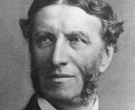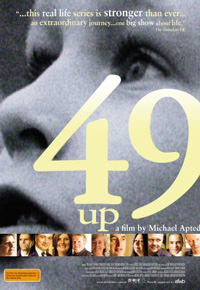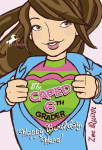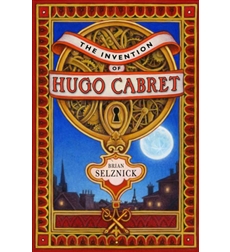 J. K. Rowling's recent announcement that she conceived of Prof. Albus Dumbledore as gay has produced a lot of critical comments. I'm not talking about knee-jerk homophobic bigotry, which largely deserves pity. I'm talking about complaints from people who would otherwise welcome the news that a major character in a bestselling children's fantasy series was gay.
J. K. Rowling's recent announcement that she conceived of Prof. Albus Dumbledore as gay has produced a lot of critical comments. I'm not talking about knee-jerk homophobic bigotry, which largely deserves pity. I'm talking about complaints from people who would otherwise welcome the news that a major character in a bestselling children's fantasy series was gay.
Those complaints seem to fall into three categories:
- The Harry Potter books didn't offer readers enough clues or indications that Dumbledore was gay.
- Dumbledore is sexless, perhaps closeted, as well as doomed, and thus an all-too-common literary type.
- The books don't have enough other gay characters, especially among the Hogwarts students.
All these complaints point to the conclusion that Rowling didn't have the courage of her convictions, that she wanted to make her novels more inclusive than they actually turned out. I'll come back to that basic thought later this week. But first, I want to point out a damned-if-she-did, damned-if-she-didn't quality to such complaints.
If Rowling had clearly "coded" Dumbledore as gay, then she would have been perpetuating stereotypes, and would have deserved criticism for that. Many readers have in fact engaged in just such profiling to interpret other
Harry Potter characters as gay: Severus Snape, Remus Lupin, and even the little-known Justin Finch-Fletchley. I recall complaints that the unfortunate
Quirinus Quirrell reflected queer stereotypes, though his sexuality never came up. This whole situation reminds me a bit of the
old joke about a person telling his psychoanalyst after a
Rorschach test, "Doc, you're the one with the dirty pictures!"--except that this time folks want to see more dirty pictures.
The next complaint is that Dumbledore was too discreet about his sexuality, that it never became part of Harry's story. Of course, if Rowling had taken that route, then people could have complained that Dumbledore couldn't just be incidentally gay, but that his sexuality had to be dragged in to aid the straight hero.
I can easily see an opening for Dumbledore to speak clearly to Harry about his past. They do, after all, talk about both love and mistakes. But none of my gay high school teachers came out to me (in the early 1980s), even when they were "out" with colleagues. And it makes sense for Albus Dumbledore as an individual to be discreet.
According to other out-of-book comments from Rowling, Dumbledore was
born in 1881 or earlier, which means he graduated from Hogwarts in 1899 at the latest. Four years earlier, in real Britain, Oscar Wilde had been sent to jail for "gross indecency." England didn't repeal its laws against sodomy until 1967, Scotland (where Hogwarts apparently is) until 1980. For most of the last century, most gay men in Britain were in denial or in the closet at some level. Of course, the history of Rowling's "world" doesn't have to match that of ours, but we usually assume it does.
Furthermore, Dumbledore's first deep love ended badly: something about a world war, deadly duels, and having to lock up his inamorato for life. Readers seem happy accepting that Snape never had another love after his frustrated infatuation with Harry's mother, Lily. Why must Dumbledore behave differently? Given all those personal experiences, it's not hard to accept that the headmaster is private about his private life.
As for the complaint that Dumbledore--sexless and doomed--is the only gay character in the
Harry Potter books, I think that's valid, but all we can say for sure is that he's the only gay character Rowling has identified. She usually reveals her unpublished thinking in response to questions from fans, so let's see if anyone asks her about others.
More specifically, people have criticized Rowling for not portraying any of her young characters as gay, thus ensuring that readers would know that homosexuality isn't just for old men. But we don't see most Hogwarts students past the age of eighteen. In March the
Advocate reported on a recent study of US men, finding that on average those born since 1970 "came out at 19 before having their first serious relationship at about 19 and a half." Britain's
Queer Youth Network wasn't founded until 1999, two years after the
Harry Potter series began. Hogwarts is drawn as a tradition-bound school in a traditional segment of British society. It's not hard to think that its students might not come out until after graduation, and that Harry himself has other things to think about than their love lives.
TOMORROW:
Credit where it's due.




























